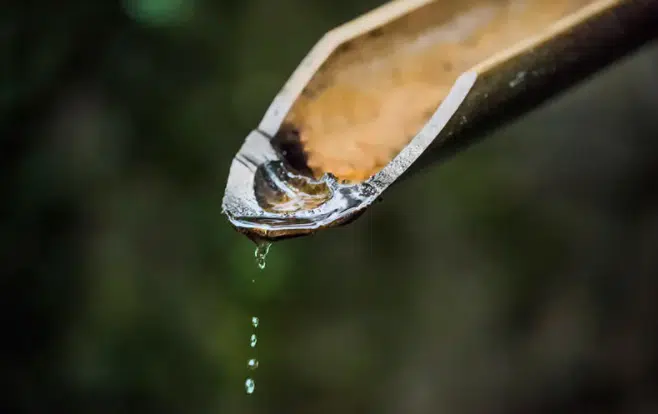1. Characteristics of the Water Supply That Is Fit for Human Consumption
Drinking water quality parameters are important indicators for measuring water quality conditions, which are related to human health and the sustainability of the ecological environment. These conditions are related to the equilibrium of the environment. For the purpose of determining the conditions of water analysis parameters quality, these parameters are utilized. The following is a list of well-known parameters that are used to evaluate the quality of water that is consumed for drinking:
The amount of particulate matter that is suspended in water for the purpose of measurement is referred to as the turbidity of the water. There will be a greater degree of cloudiness in the water if the value is higher. In the majority of instances, turbidity is measured using units of NTU.
The pH value, which is an indicator of the quality of the water, can be used to determine two characteristics of water: its acidity and its alkalinity. It is generally agreed that the normal range is somewhere between 6.5 and 8.5.
The amount of organic matter that is present in water can be determined through a measurement that is referred to as total organic carbon (TOC). The level of pollution that is present in the body of water can be determined with the help of this measurement.

DO stands for dissolved oxygen. A measurement of the amount of oxygen that is present in water is called dissolved oxygen. Both the ability of aquatic life to survive and the preservation of the quality of the water are impacted as a result of this element. The chemical oxygen demand, which is also referred to as COD, is a measurement water analysis parameters that is used to determine the quantity of reducing substances that are present in water. According to the value, the extent to which the body of water is polluted by organic matter becomes more profound as the value increases.
Heavier metals include, but are not limited to, lead, mercury, cadmium, chromium, and other instances of heavy metals. On account of the fact that these heavy metals are toxic, it is imperative that they be subject to stringent regulation because they are detrimental to both the ecological environment and the human population.
Pesticides, benzene, polycyclic aromatic hydrocarbons, and other organic pollutants are all examples of organic pollutants. Other examples include petroleum products. In light of the fact that these organic pollutants pose a threat to human health, it is necessary to implement treatment procedures that are suitable for the situation.
2. The standards that are used to evaluate the characteristics of water
When assessing the quality of water, it is essential to take into consideration a wide variety of water quality parameters. Additionally, it is necessary to carry out simultaneous sensory, physical, and chemical tests during the evaluation process. Following are some straightforward methods that can be used to judge:
Through the utilization of sensory testing, it is possible to conduct an initial assessment of the water's qualitative characteristics. Performing this step requires paying attention to the water's color, turbidity, smell, and any other relevant characteristics. If there is a smell in the water or if the water turns a yellowish brown color, there is a possibility that there is a problem with the quality of the water.
Physical and chemical testing: You can acquire a more precise comprehension of the water quality by testing the pH value, turbidity, dissolved oxygen, chemical oxygen demand, and other indicators of water quality. This will allow you to gain a more accurate understanding of the water overall. When there is an abnormality in the test results, it indicates that there is a possibility that the water quality is contaminated or that there is a potential threat to the safety of the general public.
Conducting a water source survey, which involves gaining an understanding of the environmental conditions of the water source and determining whether or not there are any pollution sources in the surrounding area, is one method that can be utilized to ascertain the quality of the water. In the event that there are sources of pollution, such as factories and landfills, located in close proximity to the water source, the quality of the water may present a risk to the safety of the general public for several reasons.
Testing that is carried out by authoritative institutions The quality of the water will be tested on a regular basis by authoritative institutions such as health departments, environmental protection departments, and other departments water quality parameters for various industries that are comparable, and these institutions will then issue test reports. By consulting these reports, consumers have the opportunity to acquire knowledge regarding the current conditions of the water quality on the market.
3. Techniques for the preservation of water supplies for consumption
The implementation of drinking water treatment methods that are suitable for the various water quality issues that have been identified is an essential step that must be taken. Among the many approaches to purifying drinking water, the following are some of the most conventional ones:
Use of sedimentation as the basis for filtration:The removal of impurities and suspended particles from drinking water can be accomplished through the utilization of sedimentation and filtration techniques, which can result in an improvement in the water's clarity. Sand filters, activated carbon filters, and other devices that are very similar to these are the various types of sedimentation filtration equipment that are utilized the most frequently.

The elimination of bacteria, viruses, and other microorganisms that are present in water is accomplished through the process of disinfection. This ensures that drinking water is not only safe to consume but also parameters of water quality beneficial to one's health. When it comes to disinfection, the methods that are utilized the most frequently are the chlorination disinfection, the ozone disinfection, and the ultraviolet disinfection.
Activated carbon and diatomaceous earth are two examples of adsorbents that can be used to reduce the amount of water pollution by absorbing organic matter, heavy metals, and other harmful substances that are present in the water. This can be accomplished by removing these toxic substances from the water.
Membrane filtration is a method that helps to improve the quality of water by removing minute particles, organic matter, and microorganisms from the water. This can be accomplished through the utilization of this technique. Some examples of membrane parameters of water quality filtration techniques that are frequently used include ultrafiltration, nanofiltration, and reverse osmosis. These technologies are examples of membrane filtration methods.
4. The following are some recommendations for the safe consumption of water
It is recommended that the following safety measures be taken in order to increase the likelihood that drinking water is safe to consume:
Make sure you have a solid understanding of the water's source:If you want to avoid drinking water that is contaminated, you should water quality parameters for various industries educate yourself about the origin of the water you drink as well as the environmental conditions that it comes from.
Inspections on a regular basis:In order to gain an understanding of the conditions of the water quality and to address any abnormalities in a timely manner, it is important to conduct regular tests on drinking water.
Methods of treatment that are reasonable in their selection include the following:You should choose the appropriate methods of water treatment based on your own requirements and the actual conditions if you want to ensure that drinking water is safe to drink. This will allow you to satisfy your desired level of safety. Be sure to pay close attention to the different storage methods:In order to prevent the water body from deteriorating, it is essential to not only pay attention to the cleanliness of the container that is used to store drinking water, but also to the temperature, the amount of light, and any other aspects of the environment in which the water is stored.
